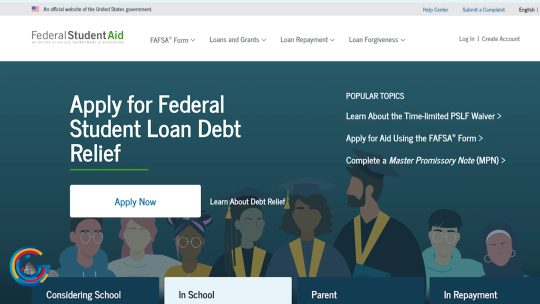Department of Education Student Loans - Blog

Department of Education Student Loans
Education student loans can provide financial assistance to help students cover their educational costs, whether they attend a local or foreign university. The amount of the loan depends on both the cost of study and any other financial aid received by the borrower.
Loans are available for undergraduate, graduate and professional studies at esteemed universities across India and abroad. These loans cover tuition fees, course materials, examinations, accommodation costs, travel expenses and other essentials.
Understanding student loan terms and conditions is essential when making a decision regarding this type of financing. Here are some key points to take into account before applying for an education loan:
Repayment Tenures: It is wise to take out a loan that can be repaid over an extended period, in order to avoid high interest rates. A repayment tenure ranging from seven years to 10 years is generally seen as ideal.
Payments: It is essential to understand that the repayment amount on your loan will be determined based on your income and loan term. Furthermore, you have the option to take out deferment or forbearance in order to avoid paying interest during times of unforeseen circumstances.
FFEL Program: The Federal Family Education Loan (FFEL) Program provides low-interest loans to assist students and their families with college or career school expenses. This initiative is administered by the U.S. Department of Education and overseen by the Office of Federal Student Financial Assistance.
Direct Subsidized Loan: The Federal Direct Subsidized Loan is a type of federal student loan that does not charge interest while students are in school and for six months after they graduate or leave. If you are an undergraduate or professional student and earn less than $10,500 annually, then this loan must also be repaid through an income-driven repayment plan.
Annual Loan Limits: The annual loan limit is the amount of Direct Subsidized or Unsubsidized Loans a student may receive each academic year, determined by their demonstrated financial need and what degree they plan to pursue. These amounts vary based on income levels and degree programs.
Aggregate Loan Limits: The aggregate loan limit is the total amount of federal loans students can receive for both undergraduate and graduate study, set annually.
Collection:
ED’s debt collection program faces increasing challenges, particularly as defaults on student loans have grown. To improve performance, the department has employed several methods. For instance, using the Internal Revenue Service to offset tax refunds owed by students who default on their loans has led to collections of over $512 million during fiscal year 1992 alone.
The department has contracted with private agencies to manage ED-held defaulted loans. This page serves as a historical record of their relationship. Despite these improvements, debt collection remains an essential function for ED and it’s vital that they continue exploring and testing alternative approaches in this area.




